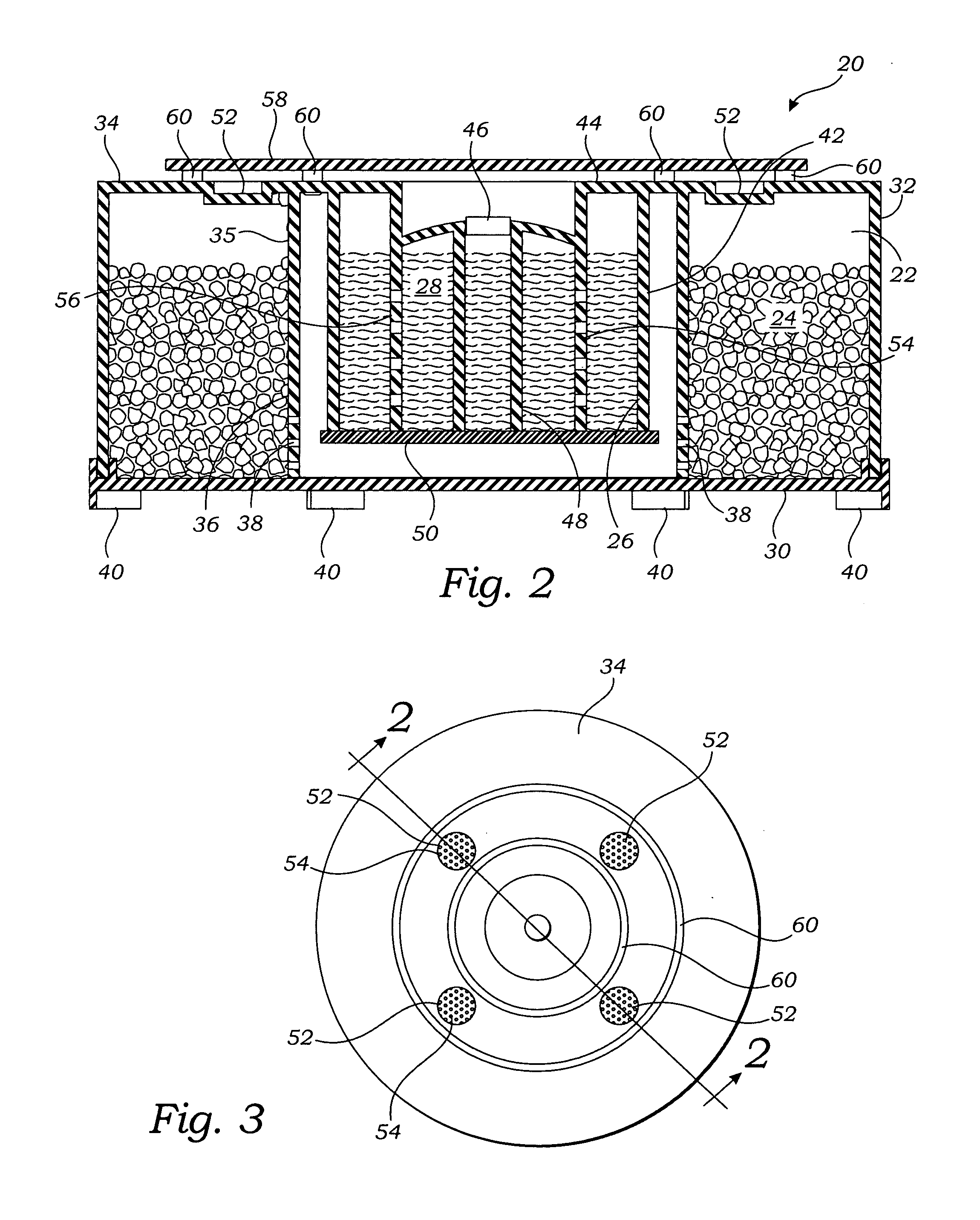Sterilization heating module
a technology of sterilization heating module and heating module, which is applied in the direction of water installations, disassembly, and disinfection, etc., can solve the problems of fire hazards, affecting the safety of workers,
- Summary
- Abstract
- Description
- Claims
- Application Information
AI Technical Summary
Benefits of technology
Problems solved by technology
Method used
Image
Examples
Embodiment Construction
[0015] Turning to FIG. 1, a heating module 10 for use with sterilizers is shown. The heating module 10 comprises a pouch 12. The pouch 12 contains a first reactant 14 which is preferably in a solid granular or powder form, such as calcium oxide. It should be understood that other compounds may be utilized as the first reactant 14 within the present invention, so long as such compound can be mixed with another reactant to produce an exothermic reaction. The first reactant 14 preferably reacts with a second reactant (not shown) which can easily be obtained in a liquid form, such as water, to produce an exothermic reaction. The second reactant may also be a gas or a very fine powder, so long as it can permeate the pouch and react with the first reactant to produce the necessary exothermic reaction. Those skilled in the art, in view of the present teachings, will be able to determine first and second reactants and their physical form which can be used in the present invention.
[0016] Th...
PUM
| Property | Measurement | Unit |
|---|---|---|
| pores | aaaaa | aaaaa |
| temperatures | aaaaa | aaaaa |
| pressures | aaaaa | aaaaa |
Abstract
Description
Claims
Application Information
 Login to View More
Login to View More - R&D
- Intellectual Property
- Life Sciences
- Materials
- Tech Scout
- Unparalleled Data Quality
- Higher Quality Content
- 60% Fewer Hallucinations
Browse by: Latest US Patents, China's latest patents, Technical Efficacy Thesaurus, Application Domain, Technology Topic, Popular Technical Reports.
© 2025 PatSnap. All rights reserved.Legal|Privacy policy|Modern Slavery Act Transparency Statement|Sitemap|About US| Contact US: help@patsnap.com



